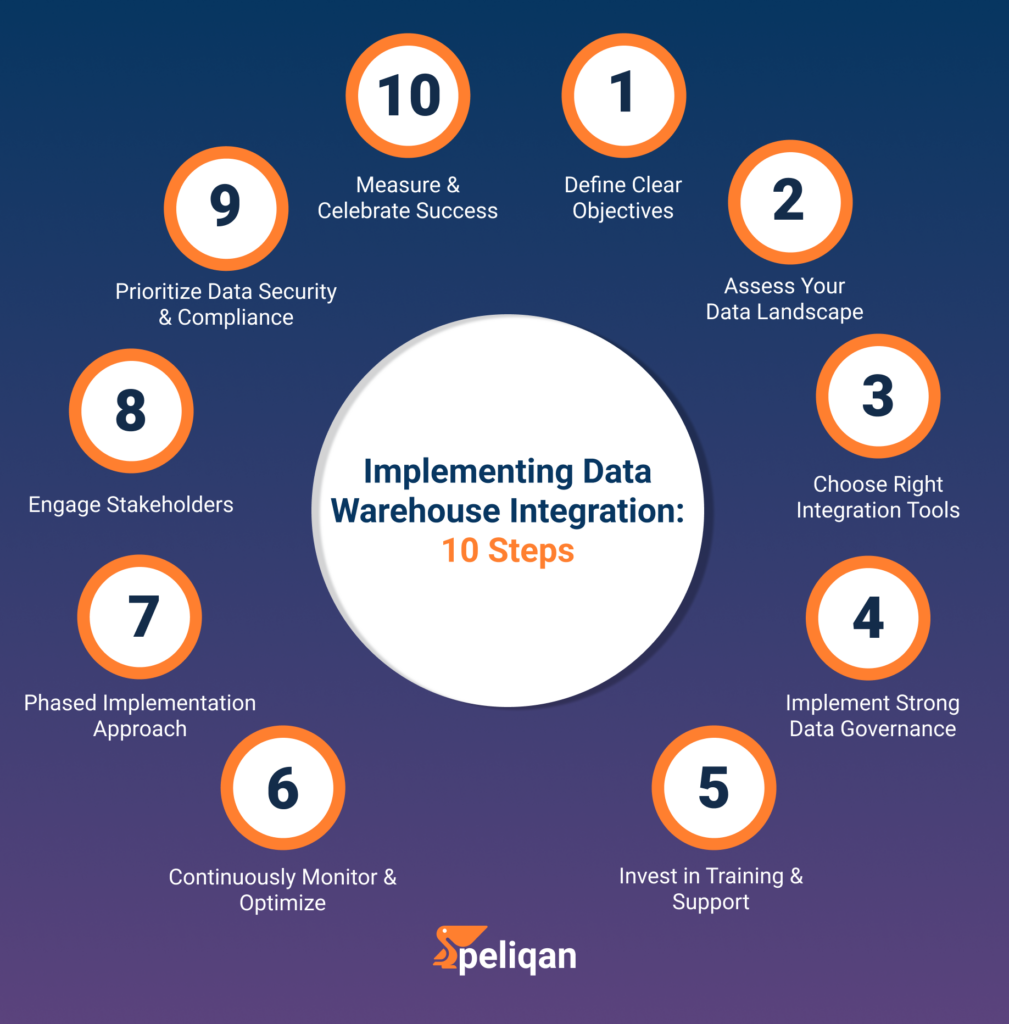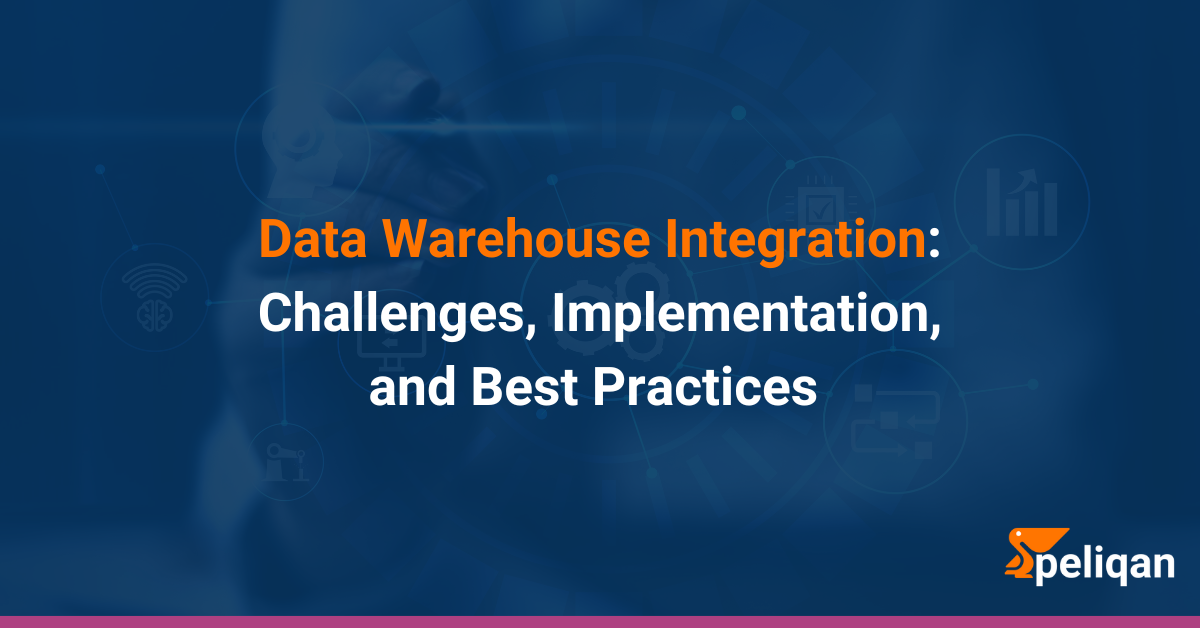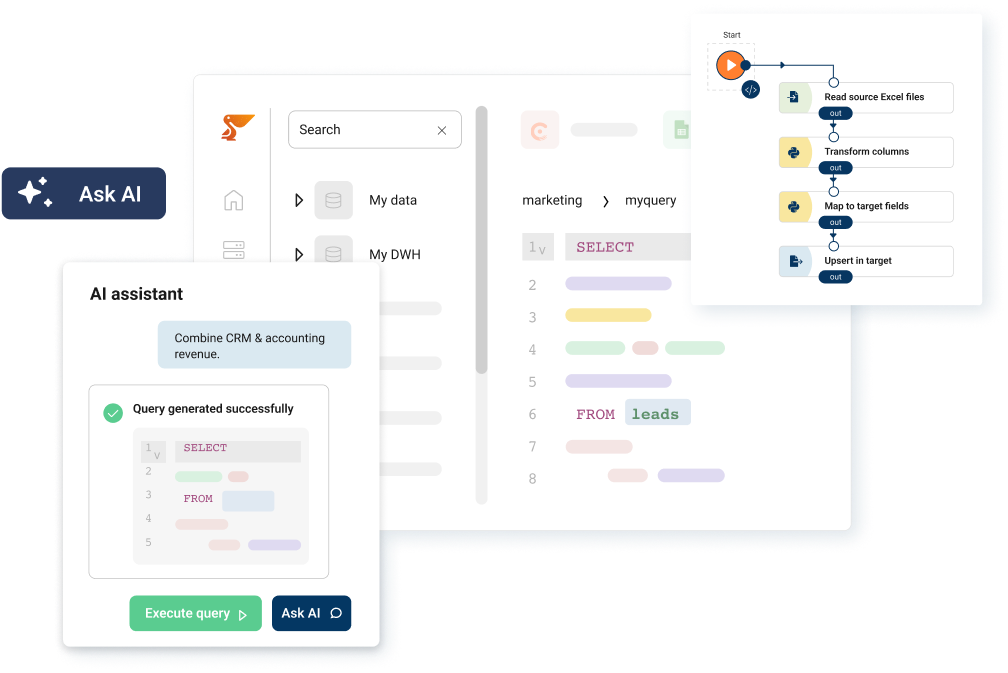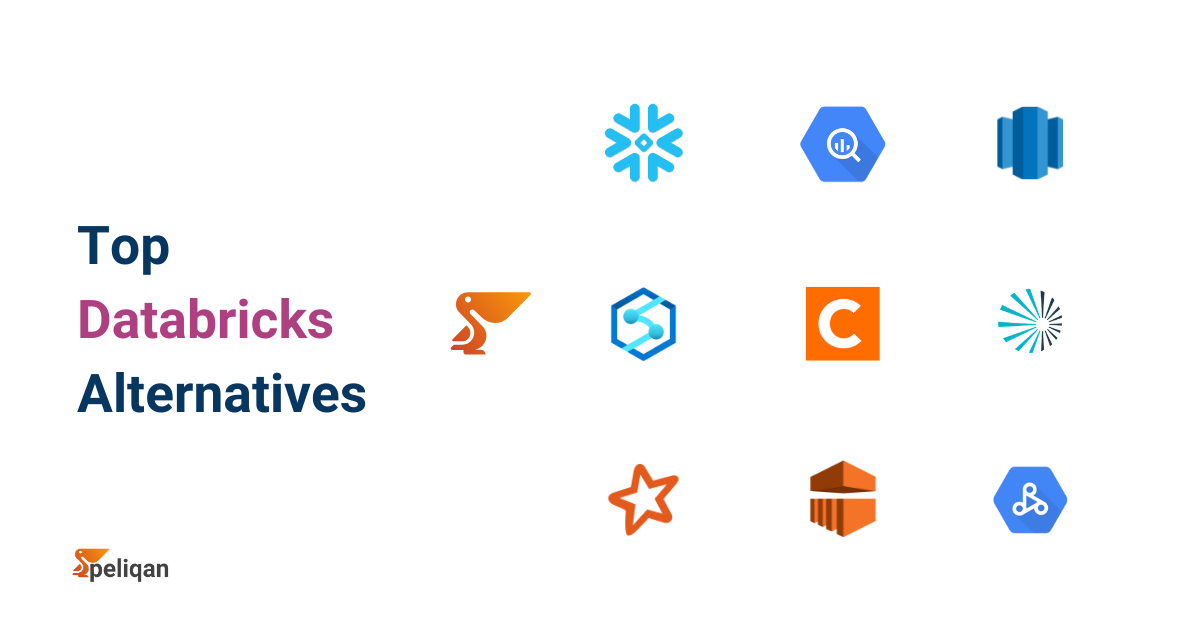In today’s data-driven business landscape, organizations are constantly seeking ways to harness the full potential of their information assets. One of the most powerful tools in this pursuit is data warehouse integration.
This process allows companies to consolidate data from various sources into a centralized repository, enabling more comprehensive analysis and decision-making. In this article, we’ll explore the ins and outs of data warehouse integration, its benefits, and how it can transform your business intelligence capabilities.
What is Data Warehouse Integration?
It is the process of combining data from multiple sources into a single, unified data warehouse. This centralized repository serves as a hub for all your organization’s data, making it easier to access, analyze, and derive insights from disparate information streams.
| Step | Description |
|---|---|
| Data Extraction | Collecting data from various sources such as databases, applications, and external systems. |
| Data Transformation | Cleaning, standardizing, and structuring the data to ensure consistency and compatibility. |
| Data Loading | Importing the transformed data into the data warehouse. |
| Data Organization | Arranging the integrated data to facilitate efficient querying and analysis. |
Data Warehouse Integration vs Data Integration
Data Integration involves combining data from various sources into a single view or application. For instance, if your company uses separate systems for sales and customer service, data integration might involve combining customer data from both systems into a unified CRM dashboard.
Data Warehouse Integration, on the other hand, specifically refers to the process of consolidating data from multiple sources into a central data warehouse for detailed analysis. For example, integrating sales, marketing, and financial data into a single data warehouse allows for comprehensive business intelligence and historical reporting.
Data Integration in Data Warehouse
Data Integration in data warehousing means bringing data from different sources into a data warehouse to enable thorough analysis. Imagine a retailer collecting sales data from various stores, online transactions, and customer feedback. Integrating all this data into a data warehouse allows the retailer to generate detailed reports and insights across all channels, helping to make informed business decisions.
Having understood the difference, let’s understand the importance of data warehouse integration.
Data Warehouse Integration Importance
As businesses grow and adopt new technologies, the volume and variety of data they generate also increase. This data often resides in different systems, each with its own structure and format, leading to data silos—isolated pockets of data that are difficult to access and analyze comprehensively. Without integration, these silos can cause significant challenges, such as:
- Delayed Decision-Making: Inconsistent data across systems can lead to delays in reporting and analysis.
- Increased Costs: Maintaining multiple systems with redundant data can be expensive and resource-intensive.
- Data Inaccuracy: Disconnected systems can result in outdated or conflicting data, leading to incorrect insights.
Data warehouse integration addresses these challenges by standardizing data formats, merging similar data points, and providing a unified view of the organization’s data landscape. This integration is essential for enabling advanced analytics, improving operational efficiency, and driving better business outcomes.
Data Warehouse Integration Benefits
The advantages of integrating your data warehouse extend far beyond just solving data silos. Here’s how this process can positively impact your organization:
Improved Data Accessibility
It makes it easier for users across your organization to access the information they need. Instead of navigating multiple systems or relying on IT for data requests, employees can query the centralized warehouse directly. This democratization of data access empowers teams to make data-driven decisions more quickly and efficiently, fostering a more agile and responsive organization.
Enhanced Data Quality
As data is integrated into the warehouse, it undergoes a cleansing and standardization process. This helps to eliminate inconsistencies, duplications, and errors that may exist in the original data sources. The result is a more reliable and trustworthy dataset that forms the foundation for accurate analysis and reporting, leading to better business outcomes.
Faster Reporting and Analytics
With all relevant data stored in one place, generating reports and conducting complex analyses becomes significantly faster. Data warehouse integration eliminates the need to manually collate information from multiple sources, reducing the time and effort required to produce insights. This efficiency enables organizations to respond more rapidly to changing business conditions and opportunities.
Scalability and Performance
Modern data warehouse solutions are built to handle large volumes of data and complex queries. As your organization grows and your data needs expand, a well-integrated data warehouse can scale to accommodate increased demand without sacrificing performance. This scalability ensures that your data infrastructure remains robust and responsive to evolving business requirements.
While the benefits are compelling, the path to successful data warehouse integration is not without its hurdles. Let’s now turn our attention to the common challenges and how to overcome them.
Overcoming Challenges in Data Warehouse Integration
Understanding the obstacles is the first step toward overcoming them:
Integration Challenges |
Solution |
|---|---|
| Data Quality Issues | Implement robust data cleansing and validation processes during the ETL phase. Use data profiling tools to identify and rectify issues before integration. Regularly monitor data quality metrics. |
| Technical Complexity | Invest in modern integration tools that support a wide range of data formats and connectors. Consider a modular approach to integration, tackling one data source at a time. Leverage cloud-based platforms for ease and flexibility. |
| Resource Intensity | Develop a phased implementation plan to spread out costs and resources. Start with a pilot project to demonstrate value quickly. Partner with experienced data integration consultants to accelerate implementation. |
| User Adoption | Involve end-users early in the integration process to gather requirements and address concerns. Provide comprehensive training and create user-friendly interfaces. Showcase early wins to build enthusiasm and support for the new system. |
| Ongoing Maintenance | Establish a dedicated data governance team for maintaining data quality and relevance. Implement automated monitoring tools to detect data discrepancies or integration failures. Regularly review and update data models and processes. |
With these strategies in mind, the next logical step is to explore best practices for ensuring a smooth and successful integration.
Implementing Data Warehouse Integration: 10 Steps
Successfully implementing it requires more than just technology; it demands a strategic approach that aligns with your organization’s goals, data architecture, and operational needs.
By following best practices, you can ensure a smoother integration process and maximize the return on your investment. Below, we explore the critical steps and considerations to guide your integration efforts.

1. Define Clear Objectives
The foundation of any successful data integration project lies in having well-defined objectives. Before you begin, take the time to outline what you hope to achieve with the integration.
Are you aiming to improve reporting accuracy, enhance customer insights, streamline operations, or perhaps all of the above? Clearly defined goals will serve as a roadmap for your project, guiding decision-making and helping you measure success.
Actionable Tip: Engage stakeholders from various departments to understand their data needs and incorporate these into your integration objectives. This will ensure that the integrated data warehouse serves the entire organization effectively.
2. Assess Your Data Landscape
Understanding your existing data landscape is crucial before embarking on an integration project. Conduct a comprehensive audit of all data sources, evaluating their formats, quality, and relevance to your business objectives.
This assessment will help you prioritize which data to integrate first, identify potential data quality issues, and determine the transformations required for seamless integration.
Actionable Tip: Create a data inventory that lists all data sources, including their owners, structures, and usage frequency. This will help you keep track of your data assets and ensure nothing is overlooked during the integration process.
3. Choose the Right Integration Tools
Selecting the appropriate tools and technologies is a critical decision that will impact the success of your integration project. The tools you choose should align with your organization’s technical capabilities, data volume, and complexity, as well as future scalability needs.
Modern data integration tools often come with pre-built connectors, data transformation templates, and cloud-based solutions that simplify the process.
Actionable Tip: When evaluating tools, consider ease of use, integration speed, support for multiple data formats, and the ability to handle real-time data processing. Also, assess the tool’s flexibility to adapt to evolving business requirements.
4. Implement Strong Data Governance
Data governance plays a pivotal role in maintaining the quality, security, and consistency of your integrated data warehouse.
Establishing robust data governance policies and procedures from the outset will help ensure that your data remains reliable and compliant with industry regulations. This includes setting data quality standards, defining access controls, and tracking data lineage.
Actionable Tip: Form a data governance team responsible for overseeing data policies, managing access rights, and regularly reviewing data quality. This team should include representatives from key departments to ensure a holistic approach to governance.
5. Invest in Training and Support
A well-integrated data warehouse is only as good as the people who use it. Investing in comprehensive training programs ensures that your employees are equipped to take full advantage of the new system.
Training should cover everything from basic querying to advanced data analysis techniques. Providing ongoing support is equally important to address any issues that arise and to encourage adoption.
Actionable Tip: Offer role-based training sessions tailored to the specific needs of different user groups, such as data analysts, business users, and IT staff. This approach ensures that everyone can effectively use the data warehouse in their day-to-day tasks.
6. Continuously Monitor and Optimize
It is not a one-time project but an ongoing process that requires continuous monitoring and optimization.
Regularly reviewing the performance of your integrated data warehouse allows you to identify areas for improvement, optimize queries, and incorporate new data sources as needed. This ensures that your data warehouse remains responsive to changing business needs and continues to deliver value over time.
Actionable Tip: Set up automated monitoring tools to track the performance of data pipelines, query execution times, and data quality metrics. Regularly update your data models and integration processes to align with evolving business strategies and technologies.
7. Adopt a Phased Implementation Approach
A phased implementation approach can help manage the complexity and risks associated with data warehouse integration. Instead of attempting to integrate all data sources at once, start with a pilot project that focuses on high-priority data.
This approach allows you to demonstrate quick wins, gain valuable insights, and refine your strategy before scaling the integration across the organization.
Actionable Tip: Choose a specific business area or department to serve as the pilot for your integration project. This targeted approach helps to showcase the benefits of integration, build momentum, and secure buy-in from other departments.
8. Engage Stakeholders Early and Often
Stakeholder engagement is crucial for the success of your data warehouse integration.
By involving key stakeholders early in the process, you can gather input on their data needs, address concerns, and ensure that the integrated data warehouse meets the organization’s requirements. Regular communication throughout the project keeps stakeholders informed and aligned with the project’s progress.
Actionable Tip: Hold regular meetings with stakeholders to update them on the project’s status, gather feedback, and discuss any potential issues. This collaborative approach helps to build trust and ensures that the final solution is well-received.
9. Prioritize Data Security and Compliance
As data is integrated from various sources, ensuring its security becomes even more critical. Implementing robust security measures, such as encryption, access controls, and regular audits, will protect sensitive information and help you comply with industry regulations.
Additionally, documenting your data security practices can be vital for audits and regulatory compliance.
Actionable Tip: Regularly review and update your data security protocols to address emerging threats and ensure compliance with the latest regulations. Consider leveraging tools that offer built-in security features tailored for data warehouse environments.
10. Measure and Celebrate Success
Finally, it’s important to measure the success of your data warehouse integration efforts. Establishing key performance indicators (KPIs) aligned with your objectives will help you track progress and demonstrate the value of the integration to stakeholders.
Celebrating successes, no matter how small, can boost team morale and reinforce the importance of data-driven decision-making.
Actionable Tip: Regularly share success stories and key metrics with the broader organization to highlight the benefits of the integrated data warehouse. This helps to foster a data-centric culture and encourages further investment in data initiatives.
By following these best practices, your organization can navigate the complexities of data warehouse integration, ensuring a successful outcome that delivers long-term value. Whether you’re just starting out or looking to optimize an existing data warehouse, these strategies will help you build a robust, scalable, and efficient data integration solution that meets your business needs.
Measuring the Data Warehouse Integration Success
To ensure your project delivers value, it’s crucial to measure its success through the following methods:
- Key Performance Indicators (KPIs): Track KPIs that align with your integration objectives, such as reduction in time spent on data preparation and reporting, increase in data accuracy, and improvement in decision-making speed and quality.
- User Satisfaction Surveys: Regularly gather feedback from end-users to assess their satisfaction with the integrated data warehouse.
- ROI Analysis: Conduct a return on investment (ROI) analysis to quantify the financial benefits of your data warehouse integration project using either a dedicated ROI calculator or the manual method of dividing net profit by total project cost.
- Data Usage Metrics: Monitor how frequently integrated data is accessed and used across different departments.
- Business Impact Assessment: Evaluate the tangible impact of data integration on key business outcomes, such as improved customer satisfaction or more accurate financial forecasting.
How Peliqan Enhances Data Warehouse Integration
Peliqan is designed to simplify and enhance the data warehouse integration process, particularly for developers and data engineers. Here’s how Peliqan stands out:
- Code-First Approach: Peliqan’s code-first platform allows developers to write custom code for data integration while automating non-essential tasks such as hosting, scheduling, and managing logs.
- Scalability: Peliqan’s platform is built to scale, ensuring that your data warehouse can handle increasing data volumes without compromising performance.
- Flexibility: Peliqan supports a wide range of data sources and integration patterns, giving you the flexibility to integrate data from any system.
- Enhanced Security: Peliqan includes robust security features to protect your data during the integration process, ensuring compliance with industry regulations.
- Developer-Friendly: With Peliqan, developers can focus on coding and customization without worrying about the underlying infrastructure, making the integration process faster and more efficient.
Conclusion
Data warehouse integration is a crucial step in transforming how organizations leverage their data for better decision-making and strategic planning. By integrating data from various sources into a unified system, businesses can overcome the challenges of data silos, enhance data quality, and streamline analytics.
Tools like Peliqan further enhance this process by offering a low-code approach tailored for developers and data engineers, automating non-essential tasks while allowing for greater customization. Peliqan’s scalability, flexibility, and enhanced security features ensure that your data warehouse integration not only meets your current needs but can also adapt to future demands. With its developer-friendly platform, Peliqan empowers your team to focus on what matters most—creating value from your data.
As you move forward with your data warehouse integration, leveraging advanced tools and following best practices will position your organization to fully capitalize on the potential of your data, driving sustained business growth and innovation.









